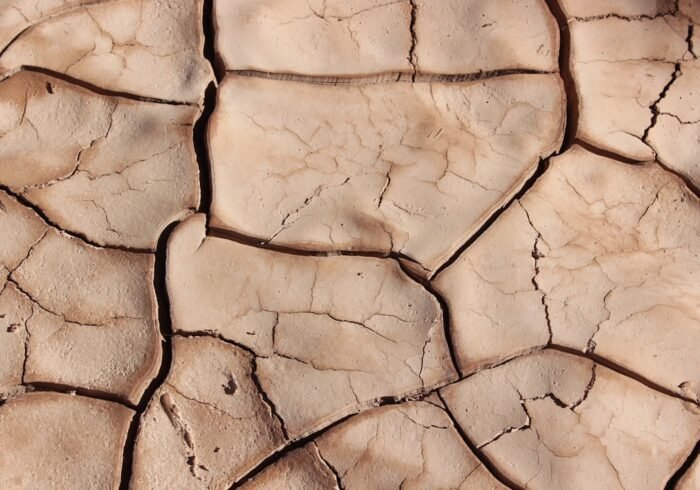The Effect of Air Pollution on Residents of Delhi Delhi, the Indian capital, is well-known for its declining air quality, which has turned into a serious public health emergency.
According to research, the city’s air pollution significantly increases the risk of cardiovascular issues, respiratory illnesses, and even early mortality.
Key Takeaways
- Air pollution in Delhi has significant negative impacts on the health of its residents, leading to respiratory diseases, cardiovascular problems, and even premature death.
- The government has implemented various initiatives to combat air pollution, including the implementation of the odd-even vehicle scheme, the introduction of cleaner fuel standards, and the promotion of public transportation.
- Transportation plays a significant role in Delhi’s air quality, with the high number of vehicles on the roads contributing to pollution levels. Encouraging the use of public transportation and cycling can help reduce emissions.
- Industrial emissions also contribute to Delhi’s air pollution, with the presence of factories and industrial areas releasing harmful pollutants into the air. Strict regulations and enforcement are necessary to control industrial emissions.
- Public awareness and education are crucial in tackling air pollution, as informed citizens can take steps to reduce their own contributions to pollution and advocate for cleaner practices in their communities.
- Urban planning plays a vital role in improving Delhi’s air quality, with measures such as green spaces, pedestrian-friendly infrastructure, and efficient waste management systems contributing to a healthier environment.
- International collaborations and efforts are essential in addressing Delhi’s air pollution, as air quality is not limited by national borders. Sharing knowledge and resources can lead to more effective solutions.
- The future of Delhi’s air quality presents both challenges and opportunities, with the need for continued efforts to reduce pollution levels, but also the potential for innovation and sustainable practices to improve the city’s environment.
With the alarmingly high prevalence of asthma & other chronic conditions, children & the elderly are especially at risk. Delhi is among the most polluted cities in the world, according to the World Health Organization, and this sobering fact has a significant impact on the health of its residents. Also, it is impossible to ignore the psychological effects of residing in such an environment. Residents may become more anxious and stressed as a result of their ongoing awareness of the poor quality of the air.
Many people find that their everyday activities are limited because they are afraid of being exposed to dangerous pollutants, which prevents them from doing simple errands or exercising outside. This change in lifestyle lowers overall quality of life in addition to having an impact on physical health. People feel powerless because of the constant reminder of the environmental crisis provided by the ubiquitous smog that permeates the city during particular seasons.
The government of India has started a number of programs to address the severe air pollution levels. Implementing the Graded Response Action Plan (GRAP), which specifies particular actions to be taken during times of severe air quality deterioration, is one of the most noteworthy initiatives. Actions like restricting construction, controlling vehicle emissions, & encouraging public transportation use are all part of this plan. In an effort to lessen the city’s overall pollution load, the government has also implemented stronger emission standards for automobiles and industries. Also, the government has made investments to monitor Delhi’s air quality using a network of stations & sensors.
| Metrics | Data |
|---|---|
| PM2.5 Levels | Unhealthy levels, often exceeding 200 micrograms per cubic meter |
| Causes | Vehicle emissions, industrial pollution, construction activities, and crop burning |
| Government Actions | Implementation of odd-even vehicle rationing, banning of firecrackers, and shutting down of coal-fired power plants |
| Public Health Impact | Increased respiratory illnesses, cardiovascular diseases, and premature deaths |
| Future Plans | Transition to electric vehicles, promotion of public transportation, and stricter enforcement of pollution control measures |
Understanding pollution trends and using this data to guide policy decisions are essential. In an effort to encourage citizens to adopt cleaner habits, public awareness campaigns have also been launched to inform them of the causes and consequences of air pollution. Despite being a positive step, these programs frequently depend on public cooperation & consistent enforcement to be effective. The air pollution problem in Delhi is largely caused by transportation. The number of cars on the road has increased exponentially as a result of the fast urbanization and population expansion.
Delhi is thought to have more than 10 million registered cars, many of which are outdated models that don’t adhere to current emissions regulations. As a result, the air is filled with a poisonous mixture of nitrogen oxides, particulate matter, and other dangerous contaminants. This problem is made worse by traffic congestion, since idling cars emit even more pollutants into the atmosphere. Public transportation systems like the Delhi Metro, which provide a cleaner alternative to private vehicles, have been promoted by the government in order to address this issue.
But in spite of these initiatives, a lot of locals still favor private automobiles for comfort & convenience. Another tactic being investigated to lower transportation-related emissions is the deployment of electric vehicles (EVs). The establishment of charging infrastructure & incentives for EV adoption are crucial first steps in building a more environmentally friendly urban transportation system. Ultimately, improving Delhi’s air quality will depend heavily on changing people’s transportation habits. In Delhi, industrial emissions are yet another significant cause of air pollution. There are many factories and manufacturing facilities in the city, which greatly raise the pollution levels overall.
Numerous industries emit excessive amounts of dangerous pollutants as a result of their antiquated technology and inadequate regulatory oversight. The issue is made worse by these industrial zones’ close proximity to residential areas, which expose thousands of locals to dangerously high levels of air pollution every day.
The government has put laws into place that require emissions testing and impose fines for noncompliance.
However, because many industries continue to disregard regulations because of corruption or a lack of oversight, enforcement is still difficult. Industries must switch to greener technologies and procedures in order to lessen their impact on the environment. In addition to improving public health, encouraging industries to implement sustainable practices can have long-term financial benefits.
In order to address Delhi’s air pollution, public education and awareness campaigns are essential. A lack of knowledge about the causes and health effects of air pollution among many locals can impede efforts to improve the quality of the air. Citizens can be empowered to make educated decisions by participating in educational campaigns that educate them about pollution levels, health risks, and preventive measures. For example, implementing energy-efficient practices, cutting back on waste burning, and taking public transportation are all small steps that can add up to better air quality. Building an environmentally conscious culture also requires active community involvement.
Through workshops, seminars, & clean-up drives, local organizations & educational institutions can significantly contribute to raising awareness. Through community involvement in pollution reduction initiatives, residents can develop a sense of environmental ownership. The public is ultimately more likely to support government initiatives to combat air pollution and to advocate for policy changes if they are informed.
In order to solve Delhi’s air quality problems, urban planning is essential. The city’s quick expansion has frequently outpaced the construction of its infrastructure, resulting in overcrowding and subpar public services. Careful urban planning can lessen dependency on private vehicles, enhance public transit systems, and produce greener areas.
For example, parks and green belts can improve air quality by acting as natural pollutant filtration systems when incorporated into urban planning. Also, exposure to hazardous emissions can be reduced by zoning laws that divide residential neighborhoods from industrial areas. Also, walkable mixed-use developments can ease traffic & encourage residents to lead healthier lifestyles. By giving sustainable urban planning techniques top priority, Delhi can establish a setting that raises the standard of living for its citizens generally and improves air quality in particular. Since Delhi’s air pollution problem has attracted attention from around the world, numerous international organizations have joined forces to try to find solutions.
The goal of programs like Clean Air Asia is to effectively combat urban air pollution by exchanging technologies & best practices from around the globe. These collaborations allow for the sharing of knowledge & grant access to funds for creative pollution-reduction projects. Also, global awareness of air quality issues has been greatly aided by international organizations such as the United Nations Environment Programme (UNEP). By taking part in international forums and conferences, Delhi can gain knowledge from effective tactics used by other cities dealing with comparable issues.
Delhi is positioned as a proactive participant in international environmental initiatives through collaborative efforts, which also improve local capabilities. For both Delhi’s citizens and policymakers, the future of the city’s air quality offers both opportunities and challenges. Although great progress has been made in increasing awareness and enforcing laws, enduring problems like population expansion, industrial emissions, and vehicle pollution still present significant challenges. Because climate change exacerbates weather patterns that can trap pollutants near the ground, the situation becomes even more complicated.
There is, nevertheless, hope for the future. Technological innovations provide creative ways to monitor air quality and cut emissions from different sources. Delhi has a chance to move away from fossil fuels and toward cleaner alternatives as interest in renewable energy sources grows. Moreover, heightened public involvement and advocacy may stimulate calls for stricter regulations targeted at enhancing air quality. In conclusion, even though Delhi has a lot of air pollution problems, there are a lot of ways to make things better in terms of government programs, public awareness campaigns, urban planning techniques, and international partnerships.
Residents can work together to take advantage of these opportunities and create a healthier, cleaner air for future generations.
Delhi is currently facing a severe air pollution crisis, with levels of harmful pollutants reaching dangerous levels. The city has implemented various measures to combat this issue, such as the Odd-Even scheme and banning the use of diesel generators. However, a related article on the impact of global warming on our planet highlights the urgent need for more sustainable solutions to address the root causes of air pollution. By focusing on renewable resources and reducing carbon emissions, cities like Delhi can work towards a cleaner and healthier environment for all.



